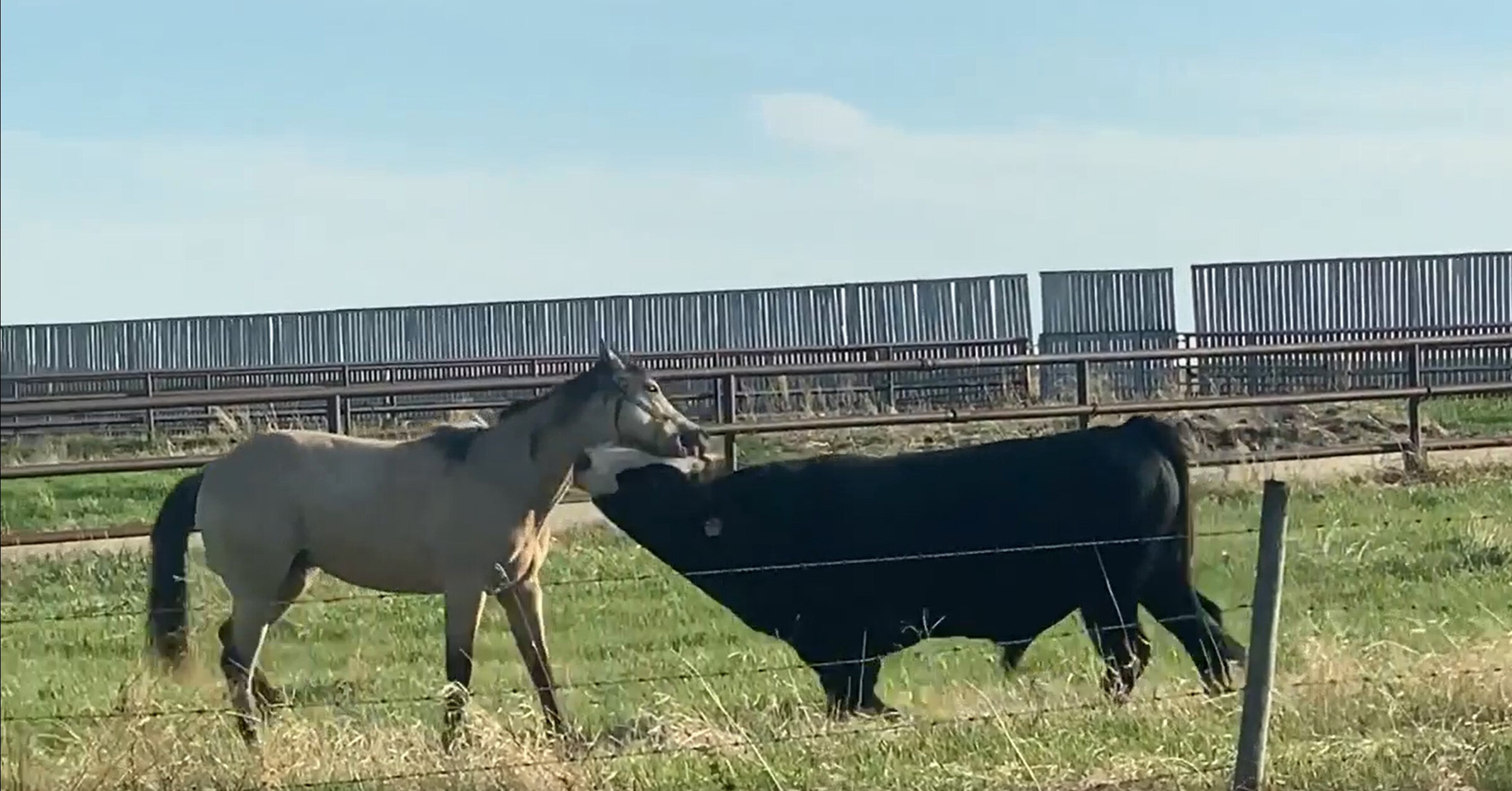Both horses and cows are herd animals and prey animals, and they share a similar body communication. When we put one cow and one horse together, they can get along well enough. Similarly, if we put one horse and a herd of cows, or one cow and herd of horses, the lonely animal will try to follow and integrate the herd. It is normal because those animals seek partners. The herd offers social interactions and protection.

However, if we have two herds, they don’t really mix. They cohabit just fine if the pasture is large enough to avoid competition over food and space. But they don’t interact too much. Horses will stay with horses and cows will stay with cows most of the time.

It is a trait cowboys exploit in horses to drive cattle around. But it can become a problem when we want to feed cows because the horses will push the cattle away. So it is good to distract the horses or keep them away when feeding the cattle.

Having cows and horses coexisting on the same pasture is beneficial as they are not affected by the same parasites. So if a horse eats the eggs or larvae of some cattle parasite, it will actually kill it, and break the infection circle. It is also true in reverse. And horses and cattle don’t eat the same species of grass, so having both cows and horses grazing will be a way to use the pasture’s resources fully.

Ranchers often keep their horses in the same fields as their cows, especially in areas where the fields aren’t counted in the thousands of acres. But even if it presents advantages to have cows and horses together, it is important to be careful on the first days. If the horse is too aggressive toward the cattle, it might be better to separate them, so both can live peacefully and without tension.
